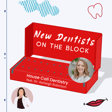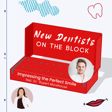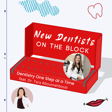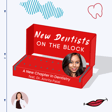
A Hands-On Experience in Dentistry w/ Dr. Dennis Hartlieb
Dr. Dennis Hartlieb and I had the opportunity to talk about honing in and building the craft of dentistry through hands-on opportunities, how photography in dentistry is essential, and propelling forward with continuing education.
Dr. Dennis Hartlieb is a graduate of the University of Michigan School of Dentistry and maintains a full-time practice committed to cosmetic and restorative dentistry in the Chicago suburb of Glenview, Illinois. Dr. Hartlieb is an instructor at the Center for Esthetic Excellence in Chicago and is formerly an Adjunct Associate Professor at the Marquette University School of Dentistry in Milwaukee, Wisconsin. Dr. Hartlieb has authored numerous articles on restorative and esthetic dental techniques
Dr. Hartlieb is an Accredited member of the American Academy of Cosmetic Dentistry (AAACD), American Academy of Esthetic Dentistry (AAED), a member of the American Academy of Restorative Dentistry (AARD), the American Dental Association, the American College of Dentists, and the American Academy of Dental Sleep Medicine. He is the founder of Dental Online Training (DOT), an online hands-on training program for dentists, dental auxiliaries, and dental students. Dr. Hartlieb is also an examiner for the AACD Accreditation process.
Check out Dental Online Training
Connect with Dr. Dennis Hartlieb
Connect with Dental Online Training
Connect with New Dentists on the Block: @newdentistsontheblock
Connect with Tanya Sue Maestas: @tsmaestas.dds
Full video on Youtube



















